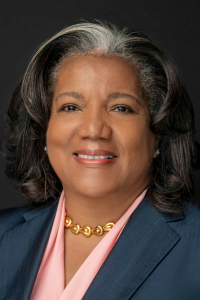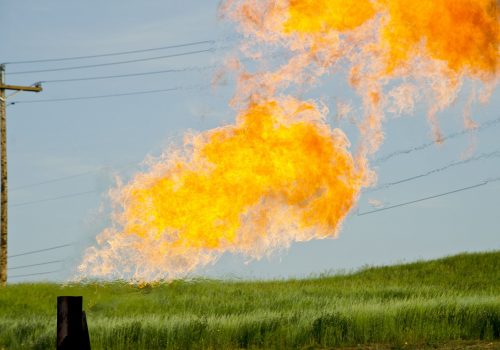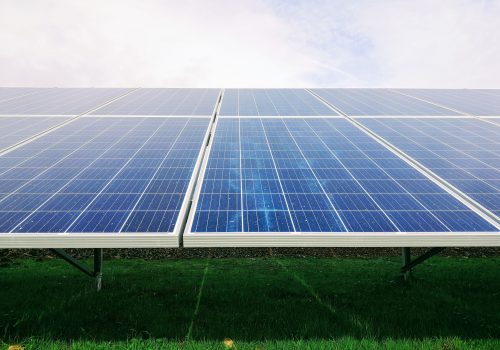In honor of Earth Day’s 50th anniversary, expert panelists will explore how different actors from across the energy sector, from renewables to hydrocarbons, can work together to meet energy demand and achieve climate goals, while also safeguarding and improving the environment.
As the world moves to cut carbon emissions and mitigate climate change, the global community must also come together to minimize the environmental impacts of the energy system and look for opportunities to better the environment. There is a range of existing problems in addition to climate change that we must address, including water and air quality, deforestation, and land use.
Similar to collaborative actions taken in the past to protect the ozone layer and reduce air pollution, national governments, international institutions, energy companies, and the broader business community can develop collective solutions to our environmental problems while also meeting energy demand in an increasingly sustainable way. Actors from across the energy sector have an opportunity to play a proactive role in meeting these environmental challenges and in creating a cleaner, healthier, and more inhabitable environment.
Event recap
On April 22, the Atlantic Council Global Energy Center hosted a virtual event in honor of Earth Day’s 50th anniversary, where panelists looked beyond carbon emissions and explored the myriad environmental impacts of the energy system, as well as the collective, cross-sector solutions available to address them. Moderated by Cynthia Quarterman, Atlantic Council Global Energy Center distinguished fellow, the panel featured Mark Lambrides, director for global energy and infrastructure at the Nature Conservancy, Barbara Finamore, senior strategic director for Asia at the Natural Resources Defense Council, Emily Hersh, managing partner at DCDB Group, and Marco Margheri, senior vice president of Eni US and chairman of the World Energy Council, Italy. In encompassing the energy spectrum, speakers discussed issues and solutions regarding coal consumption and production, critical resource mining, oil and gas extraction and asset maintenance, as well as new renewable deployment.
While scaling renewable capacity is fundamental to mitigating climate change, hydro-electric dams can cause major fluvial, ecological, and social disruption, and new solar and wind farms, terrain-intensive projects, can have negative impacts on surrounding communities and forested areas. However, Lambrides explained that if developers work with public authorities to site renewable projects on already converted or degraded lands, or on decommissioned coal mines and other brown lands, they could successfully mitigate resultant environmental and community impacts. And more practically, he asserted that proper siting would reduce project permitting times by 50 percent and cut costs, accelerating the clean energy transition.
Panelists also discussed the environmental damage wrought from coal extraction and consumption, as well as opportunities to green or transition away from solid fuels. Finamore highlighted that beyond generating 40 percent of global greenhouse gas emissions, coal use pollutes our air, poisons our water, and degrades productive land. Solid fuel mining and processing also requires a tremendous amount of water, while coal ash contaminates rivers and undermines human health. When solicited for solutions to these challenges, speakers noted the importance of government-directed coal phaseouts, corporate and public divestment from coal and its underwriters, clean tech transfers to coal-dependent states, and elevated public health messaging.
Speakers then moved to address the crucial role of critical mineral extraction in the clean energy transition and discussed ways to make the mining of rare earths more sustainable. While certain mining actors can decimate mountaintops and pollute water supplies with waste, Hersh emphasized that mining must not be perceived as an “inconvenient truth,” but rather an inextricable part of modern technological life, the basis for all clean energy advancement. In her view, raising consumer awareness around clean tech’s mineral foundations may push mining companies and related tech manufactures to adopt more robust sustainability criteria. Hersh highlighted money as one of the greatest obstacles to sustainable mining; Blackrock and other money managers will need to invest in sustainable mines and financially support extraction companies as they expend more to green the process and centralize supply chains.
Turning to hydrocarbons, panelists discussed opportunities for minimizing the environmental impact of the oil and gas industry. Oil spills can destroy whole ecosystems while hydraulic fracking can render productive land fallow, contaminate freshwater with methane, and generate seismic activity. Margheri commented that oil and gas companies, like Eni, can unilaterally curb gas flaring, minimize freshwater use through recycling, and instrumentalize technology, supercomputers or otherwise, to mitigate the environmental impacts of upstream exploration. Overall, panelists agreed that moving towards a new energy system, one founded upon cleaner energy, sustainable mining, and responsible siting, is the single- most-effective way to combat climate change and protect the environment.
Agenda
A conversation with
Barbara Finamore
Senior Strategic Director, Asia
Natural Resources Defense Council
Emily Hersh
Managing Partner
DCDB Group
Mark Lambrides
Director, Global Energy & Infrastructure
The Nature Conservancy
Marco Margheri
Senior Vice President
Eni, US International Affairs Office;
Chairman
World Energy Council, Italy
Moderated by
Cynthia Quarterman
Distinguished Fellow
Atlantic Council
Related experts
Related content
Learn more about our Climate & Advanced Energy Program

The Global Energy Center develops and promotes pragmatic and nonpartisan policy solutions designed to advance global energy security, enhance economic opportunity, and accelerate pathways to net-zero emissions.




